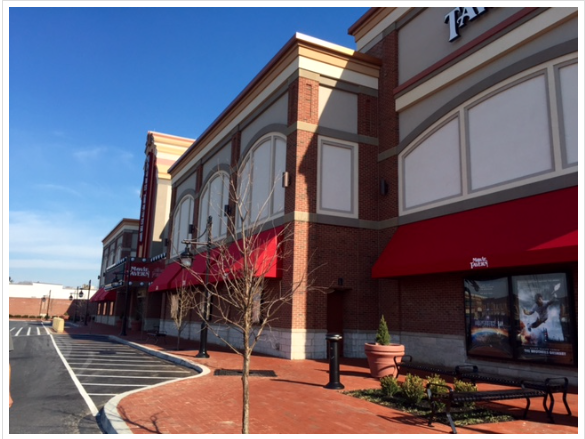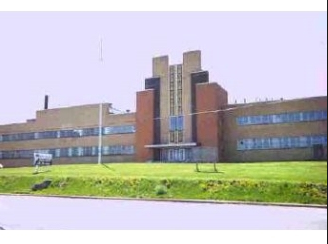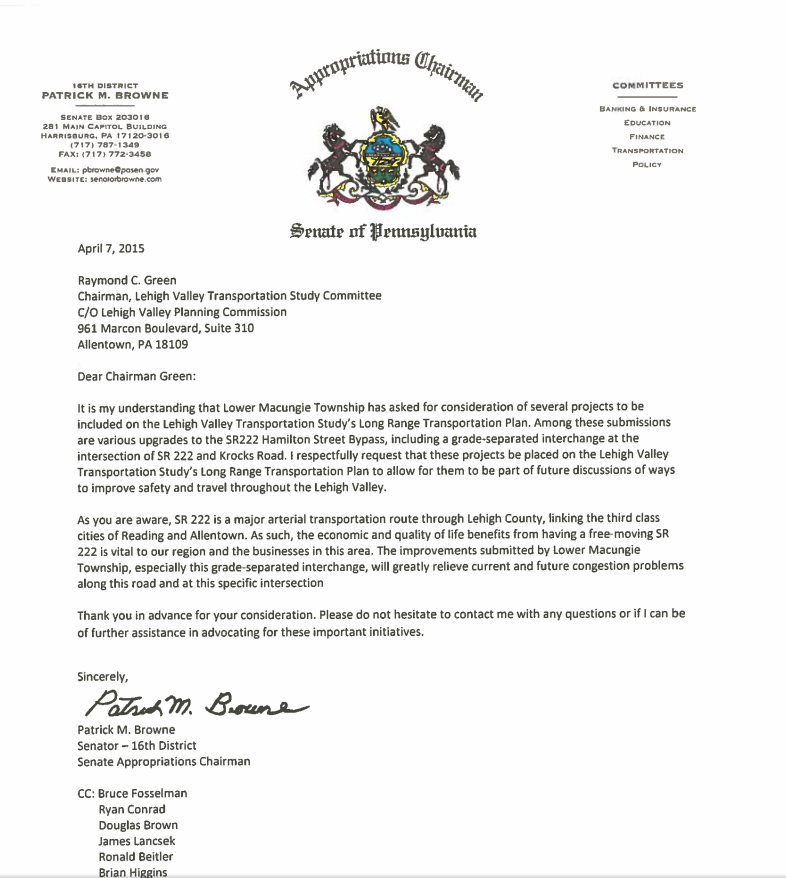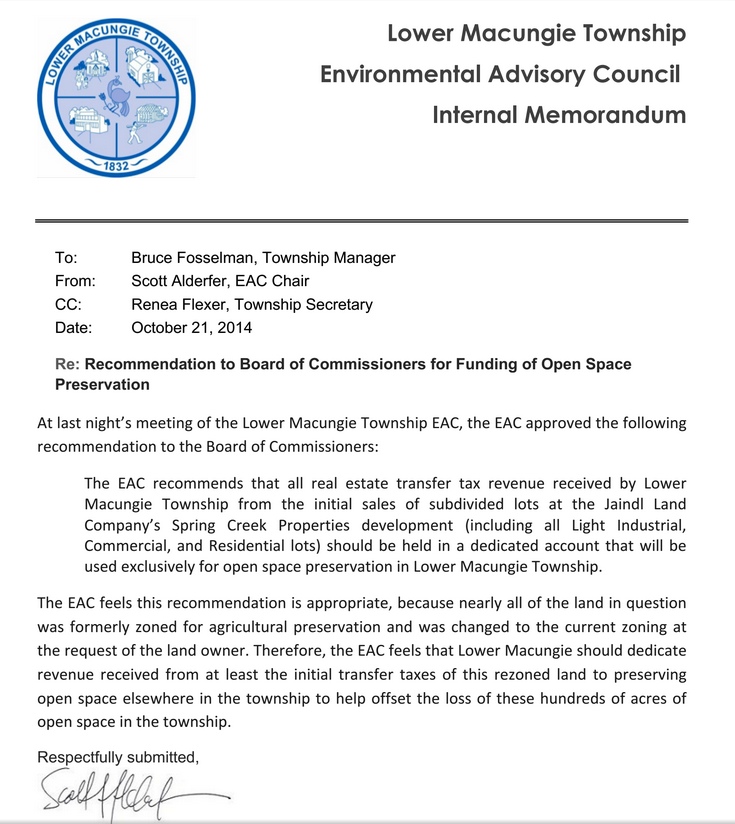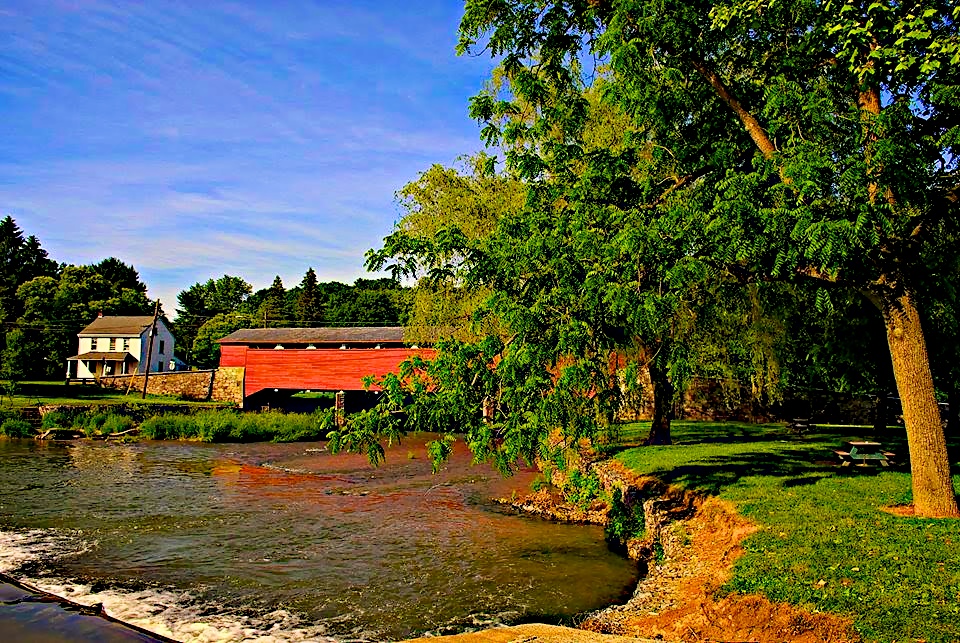Movie Tavern has generated a lot of positive discussion over the last couple days. But before we get to that let’s back up a second.
I was elected on a smart growth platform. From the beginning I was clear that meant better growth management. Not stopping growth. You can’t stop growth. And to promise that would have been insincere. I was clear Lower Mac’s strategy needed to be smart growth + land preservation. And that’s exactly what we’ve been implementing.
Here are just a few examples:
Preservation of 55 acres on Mountain Rd.
Lower Macungie commits funds to preserve 55-acre Heim farm
Adoption of official map – a critical preservation tool
With official map Lower Macungie could take more proactive stance on land use issues
Utilization of County municipal match to leverage twp. funds for preservation dollars
Turning $200,000 into $800,000 for farmland preservation Two Lehigh County townships in pilot program to save farms
Update of our comprehensive plans
www.planswl.org
I also believe we need to hold development in appropriate locations to higher standards. Not be afraid to vote against projects that would have negative impact. I’ve done this having voted against and pushed back on bad projects. I’ve said here on this blog many times Lower Mac is open for business in appropriate growth areas but developers should be prepared to bring your ‘A’ game. In other areas where dumb growth strains our infrastructure and resources we must be prepared to put our skin in and game enter the market and get farmland and open space preserved. And we have done that. And will continue to do that.
So that brings us to the Movie Tavern and if the township should support a variance for increased building height to accommodate a 15 ft higher than the roofline marquee that some have categorized as a tower.
The township currently regulates building height to 50ft. This is by my best guess a fairly old regulation. The question becomes, is this a standard we should dig our heels in on and risk losing what is otherwise a pretty good fit for our boulevard? Or should we work with the tavern like we’ve done for 6+ months now.
First, it’s important to understand what the purpose of the 50ft regulation is. Regulations must have a purpose. I spent some time trying to figure that out last two days. Since the ordinance was written before our current zoning officer and planner were here I can make an educated guess it has something to do with fire safety. When the ordinance was written the LMTFD may not have had the capability to fight fires in buildings over 50ft. Fact is today we can. I confirmed that yesterday with the LMTFD Chief. And of course this was reviewed as part of the land development process months ago as all developments are. Brent Mcnabb our fire inspector sits on our planning commission. Every single land development is reviewed by Brent.
Bottom line is we absolutely should hold developers to higher standards. And we have been last 2 years. To that end the project has seen numerous revisions over 6 months. Largely because the township requested certain improvements. In fact Movie Tavern officials have said to me “Lower Mac is the hardest review process we’ve ever had to go through”. But they also agree and have said that the strenuous review will result in a much better overall project. That’s the sort of buy in we seek.
Some of our requests included a complete redesign of the back of the building to eliminate glare, an additional large plaza area if front of the tavern and also allowing the township to hand pick the facade and building prototype that best represented the townships design standards. Movie Tavern volunteered to do all of this. And the review isn’t yet finished. The height issue relates directly to the Movie Tavern component. But the rest of the project is subject to a conditional use hearing that is yet to be held. Even today I have issues with other aspects of the property and of course will attempt to address them.
What I don’t want to do is regulate good projects to death. That’s not my purpose. As a whole this is a decent project. Not great. But within the scope of the overall project a Movie Theater is one of the best aspects. This is mostly based on measurable impact.
Fact is, the tavern IS the best use for this location. Understand, this commercial center is allowed under zoning. Since it’s grandfathered that cannot be changed. Something is going to be built at this location as an anchor for this commercial center. If it’s not a Movie Tavern it would likely be some else. Probably box retail. And box retail would almost certainly have more impact both on the community at large and also neighbors. Purely traffic conversation. The theater is an anchor that will generate mostly evening and weekend trips. Anything else would likely be AM/PM peak day trips. That is exactly what we want to avoid.
I will also say having attended the hearing it was clearly demonstrated with site line drawings that the tower would not impact neighbors. I think this could have been addressed even further with enhanced buffer plantings along the back of the building.
So the issue is, yes I believe strongly (and have demonstrated many times) the township needs to have a commitment to high design standards. On this project we’ve done that. But at the same time those standards need to have an actual purpose. It’s not just obstructionism or throwing up monkeywrenches. With the Movie Tavern we have an excellent use on a decent project in an area identified by long term comprehensive plans (regional and local) for targeted growth.
Residents came with very valid concerns (we need more of this) and I think those concerns were addressed. There will be more opportunities to address concerns during conditional use.
Because I’ve fought bad projects in the past I think some expect me to fight every development project. There are some who just want the township to cease all development. Personally I’m sympathetic. I wish we could. Would be nice to just put a moratorium on development. But unfortunately, that’s impossible based on state laws. So I’m going to continue to do what I’ve done last 2.5 years. Aggressively advocate for farmland and open space preservation. Continue to hold developers to very high and meaningful standards. And for projects that represent good fits in identified growth areas? Get the heck out the way and help foster higher value growth in the right places.
I’m sorry that some disagree with me on this. But I made a promise when I ran to always let residents know exactly where I stand on issues. And this is another attempt at letting folks know where my head is at. Disagree? Let’s talk. Contact me at ronbeitler@gmail.com

